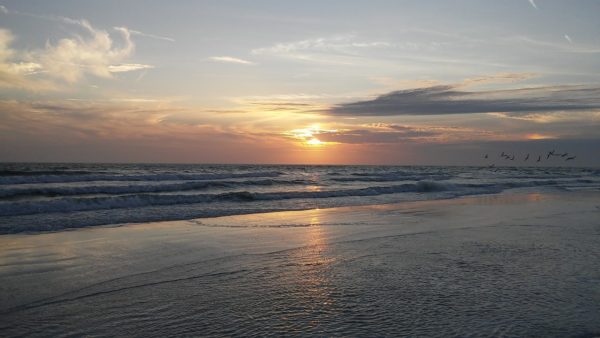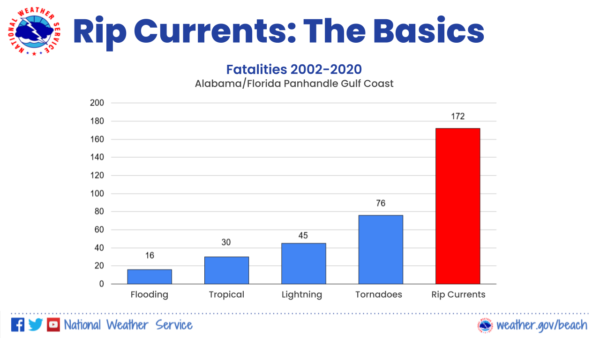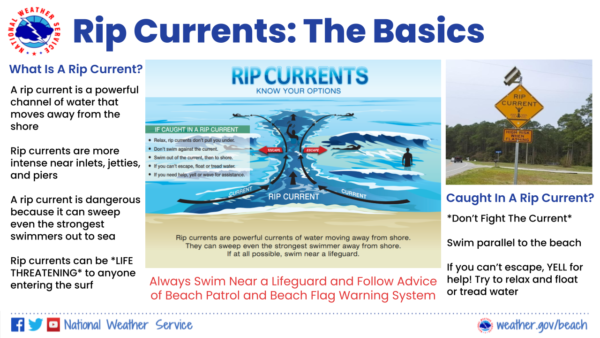Gulf Coast Rip Current Awareness Week — Day 1: All About Rip Currents

While the Gulf Coast is known for its beaches, rip currents are a hidden danger that all folks visiting the Gulf Coast should be aware of. We’ll talk about rip current statistics, identifying rip currents, and how to keep yourself safe from them! We want everyone who visits our amazing beaches to have a good time and a safe time.
Contrary to popular belief, the Gulf isn’t always “flat” (calm with no surf). There are a variety of conditions that can bring big waves to the area and an increased threat for rip currents.
All information and images are from NWS Tallahassee’s Rip Current Awareness Page.
All About Rip Currents
We all love the beach – the sun, the sand, and the surf. BUT! Just because you are having fun at the beach does NOT mean you can forget about safety.
Rip currents are the #1 weather-related killer at the beaches along the northern Gulf Coast. There have been a staggering 172 rip current fatalities since 2002 in the beaches covered by the National Weather Service Offices in Tallahassee, FL and Mobile, AL. That is more than the fatalities of flooding, tornadoes, lightning, and tropical storms/hurricanes COMBINED!! [Note: Rip current fatalities are only across our coastal counties with beaches (2 in Alabama and 7 in Florida), whereas the other fatalities are spread across the entire forecast area that spans 68 counties in Alabama, Florida, Georgia, and Mississippi.]

What is a Rip Current?
A powerful, narrow channel of water flowing away from the beach. Rip currents typically extend from near the shoreline out through the breaker zone where breaking waves form. Rip currents can and do occur on clear, sunny days.
Think of a rip current like this – it is a natural treadmill traveling away from the beach. Rip currents can travel as fast as 8 feet per second – that’s faster than an Olympic swimmer! A rip current is dangerous because it can sweep even the strongest swimmers out to sea. For that reason, rip currents are life-threatening to anyone entering the surf.
Rip currents also commonly form around breaks in sandbars and near inlets, jetties, and piers (where they are more intense).

What is NOT a Rip Current?
A rip current is NOT a “rip tide”. A rip current is also NOT an “undertow”. Rip currents do not pull you under the water – it will just pull you away from the beach.
Beach Forecast
NWS Meteorologists along the Gulf Coast routinely provide daily rip current forecasts for local beaches via the “Surf Zone Forecast” (SRF) product:
• Surf Zone Forecast from NWS Mobile (Coastal Alabama & Northwest Florida Beaches)
• Surf Zone Forecast from NWS Tallahassee (Florida Panhandle Beaches)
Category: ALL POSTS















